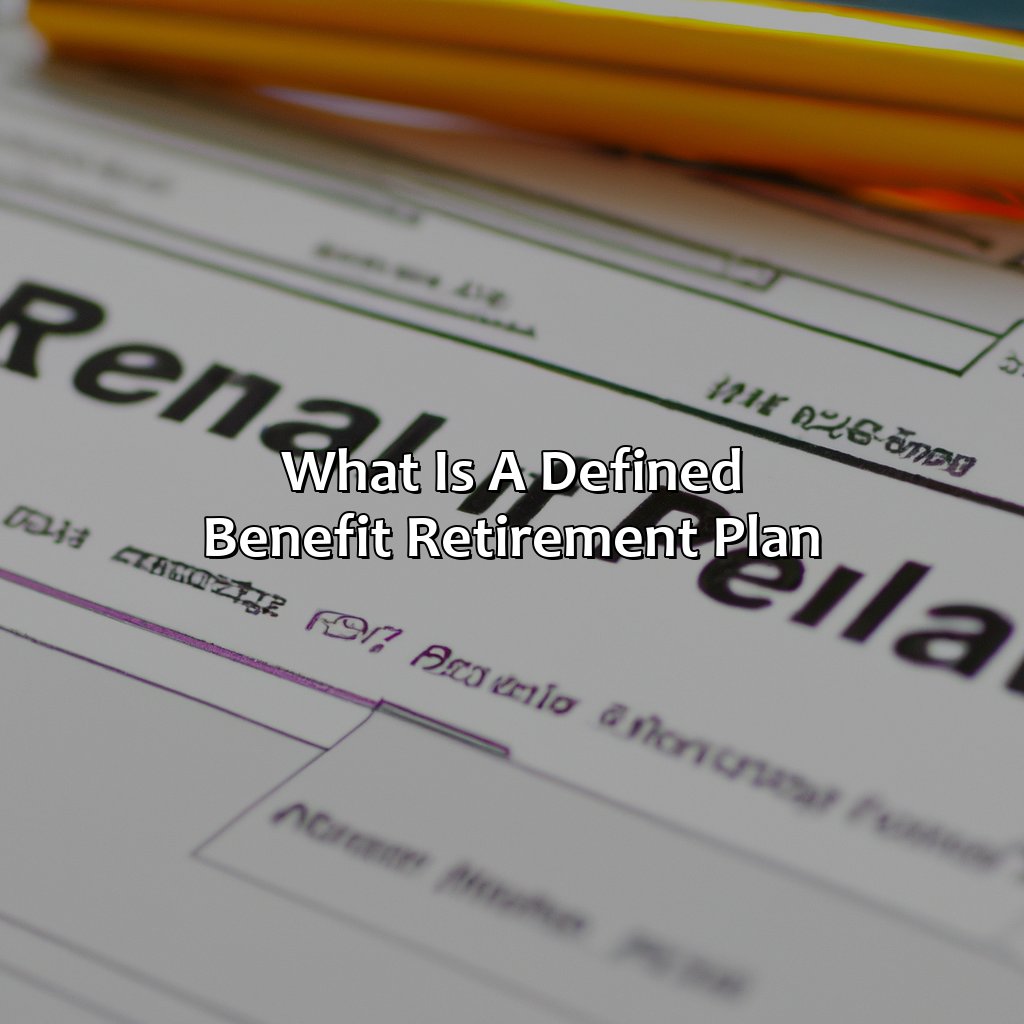What Is A Defined Benefit Retirement Plan?
Key Takeaway:
- A defined benefit retirement plan is a retirement plan in which an employer promises to pay a specific amount of money as a retirement benefit to its employees based on a formula that takes into account factors such as salary and length of service.
- A defined benefit plan provides employees with a guaranteed retirement benefit, making it a desirable option for those seeking retirement security. The employer is responsible for the contributions and investment management of the plan.
- A pension funding formula is used to determine how much money is required to be set aside in order to fund the promised benefits. While the tax benefits of a defined benefit plan are advantageous, there are funding risks and a lack of flexibility when compared to a defined contribution retirement plan.
Are you facing difficulty in understanding the complexities of retirement planning? Get to know about different retirement plans and understand how a Defined Benefit Retirement Plan can help provide financial security for your retirement. You deserve to plan for a safe and secure future!
Definition of a Defined Benefit Retirement Plan
A defined benefit retirement plan is a type of employer-sponsored retirement plan that provides employees with a specific amount of retirement benefit based on a formula that considers salary and years of service. Unlike defined contribution plans, such as a 401(k), a defined benefit plan ensures a guaranteed retirement income and places the investment and longevity risk on the employer. Funding requirements are generally set by the government, and contributions are managed by a pension fund made up of employer and employee contributions. These plans offer a valuable financial security blanket for employees in their retirement years.
Pro Tip: Understanding the structure and benefits of a defined benefit retirement plan can help employees make informed decisions about their retirement planning and ensure financial security in their later years.
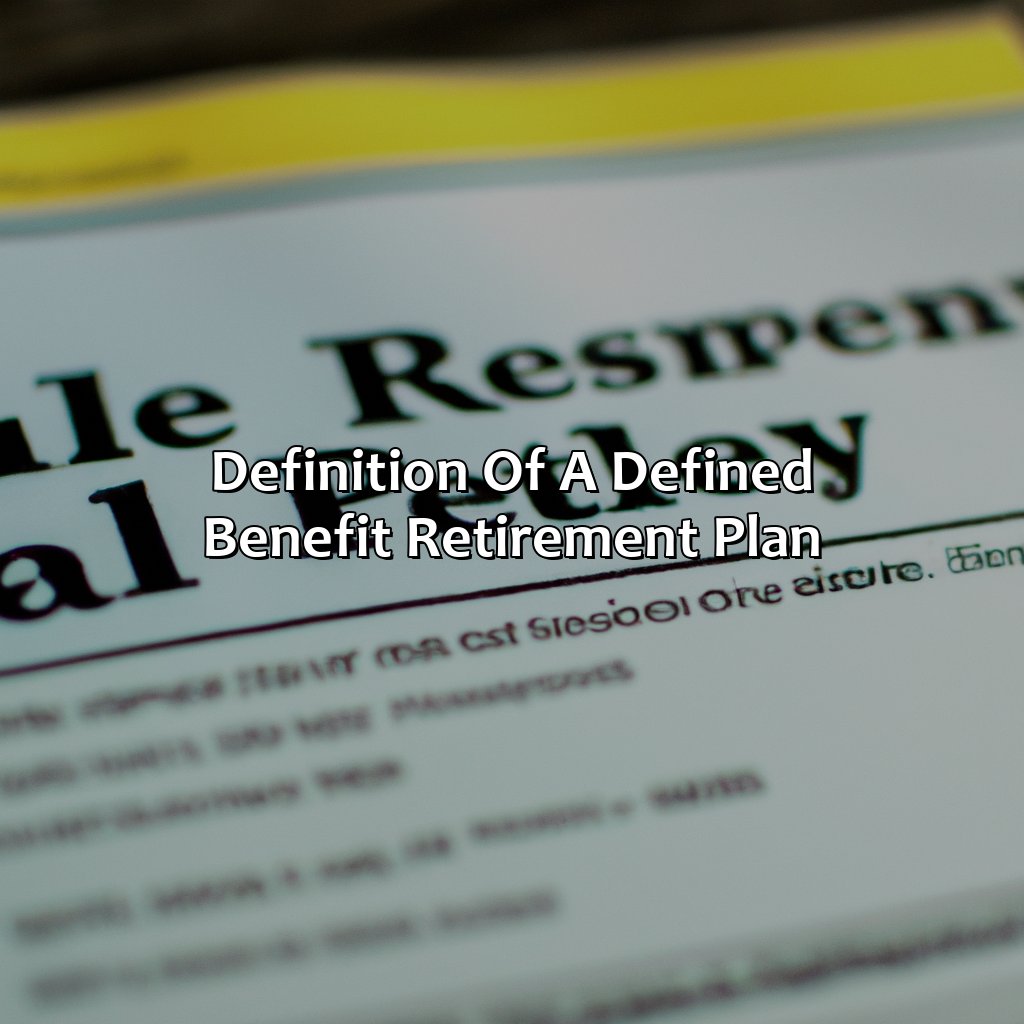
Image credits: retiregenz.com by Adam Woodhock
Features of a Defined Benefit Retirement Plan
To get a grasp of a defined benefit retirement plan, you must know its guaranteed retirement benefit. Employers are responsible for contributions and managing investments. Pension funding formula calculates benefits. These sub-sections will help you understand the basic elements of this plan.
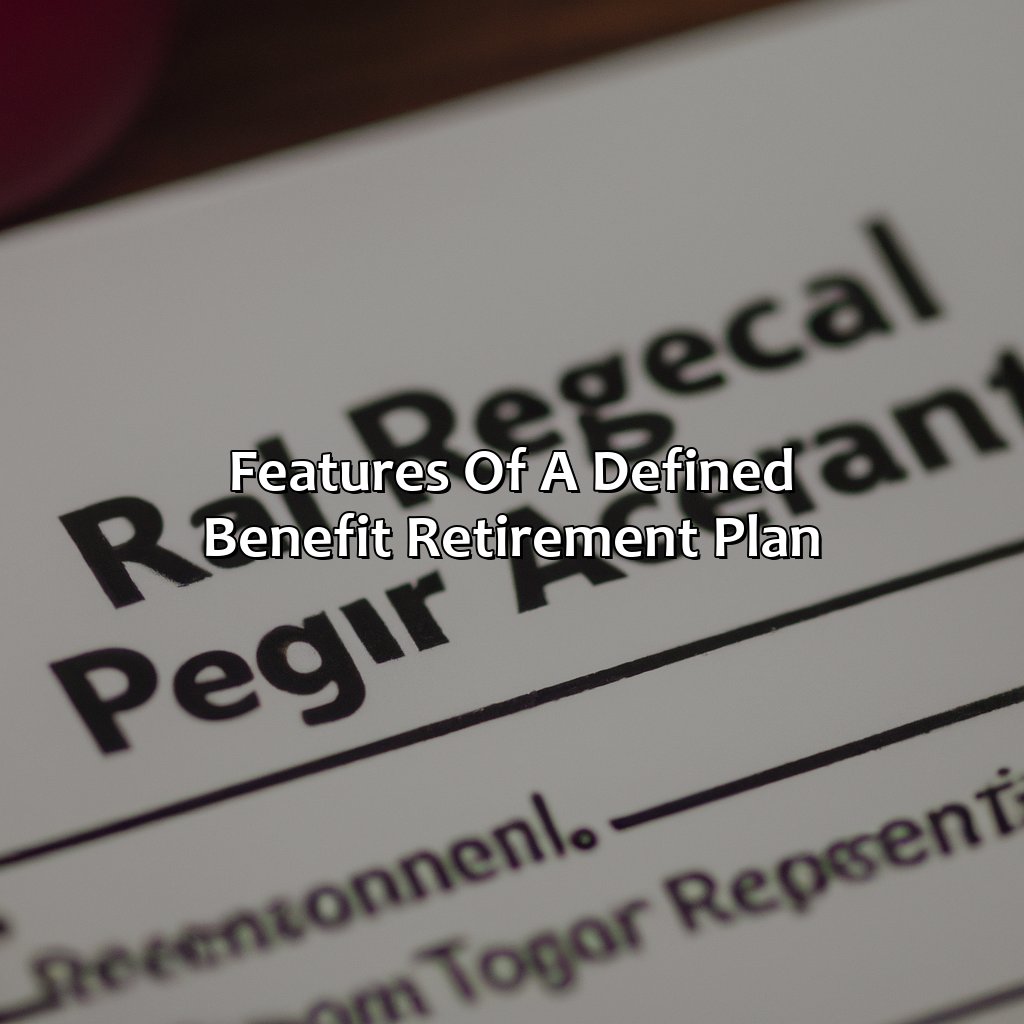
Image credits: retiregenz.com by Adam Jones
Guaranteed Retirement Benefit
Guaranteed retirement benefits refer to a type of retirement plan where employees receive a specific amount of money after they retire, regardless of the financial market’s performance.
- This kind of plan is less risky for employees who are assured of their retirement benefits without needing to invest in the market.
- It provides stability as the employer is obligated to meet the promised payments.
- The calculated payout is dependent on various factors such as salary, length of employment, and age at retirement.
With a significant portion of Americans struggling to afford retirement living costs, guaranteed retirement benefits play a vital role in ensuring financial security for retirees without depending solely on social security. Did you know that Defined Benefit plans were extremely popular among employers in the early 2000s? However, with time, there’s been a significant shift towards 401(k) plans due to lower cost and higher flexibility. Looks like it’s the employer’s job to keep the retirement plan running smoothly, because let’s face it, most employees barely remember to water their office plants.
Employer Responsibility for Contributions and Investment Management
When it comes to Defined Benefit Retirement Plans, the employer has a crucial role in determining the contributions and managing investments. Here’s what you need to know:
| Employer Responsibilities for Contributions and Investment Management | Explanation |
|---|---|
| Determining contribution amounts | Employer sets contribution levels for employees’ retirement plans |
| Funding the plan | Employer is responsible for contributing funds to the plan |
| Investment management | The employer is responsible for choosing and overseeing investments made on behalf of the employees |
It’s important to note that some employers may choose to outsource investment management responsibilities. In that case, they would hire a qualified investment manager.
In addition, it’s crucial for employers to communicate plan details with employees. This includes information on contributions, vesting schedules and potential earnings.
A company once faced legal issues because they failed to fully disclose changes made to their defined benefit plan. Employees claimed they had suffered financial losses as a result.
As an employer, ensuring full disclosure and proper management is critical in upholding your responsibilities regarding Defined Benefit Retirement Plans.
Why bother planning for retirement? Just become a professional couch surfer and let the defined benefit plan fund your Netflix subscription.
Pension Funding Formula
Calculating the Retirement Funding Compensation
A pension funding formula observes the employer’s contributions, plan participants, and investment returns to determine retirement benefit amounts for defined benefit plans. This complex system includes multiple factors to calculate employee benefits based on years of service and final average income.
Employers use pension funding formulas to secure long-term financial stability by providing a fixed payment in retirement according to a pre-determined calculation method. For instance, companies might use a Cash Balance Pension Plan where employers contribute a certain amount annually for an employee’s lump sum payout at retirement age.
The calculation method using a pension funding formula considers factors like the actuarial assumptions (inflation rate, investment returns), expected lifespan of beneficiaries, employer contribution rules, and more. Defined benefit plans involve higher costs than other pension plans due to their promise of guaranteed payouts.
Pro Tip: Ensure cost-effectiveness when implementing a defined benefit plan by considering important factors when developing and determining contributions towards employee pensions.
Retirement plan or retirement scam? The defined benefit plan debate rages on.
Advantages and Disadvantages of a Defined Benefit Retirement Plan
Want to know the perks and drawbacks of a defined benefit retirement plan? Have a peek at the Tax Benefits and Retirement Security, and Funding Risks and Lack of Flexibility sub-sections.
Investigate these sub-sections to gain knowledge on how these plans offer tax benefits and steady retirement income. But, also bear in mind the funding risks and lack of flexibility compared to other retirement plans.
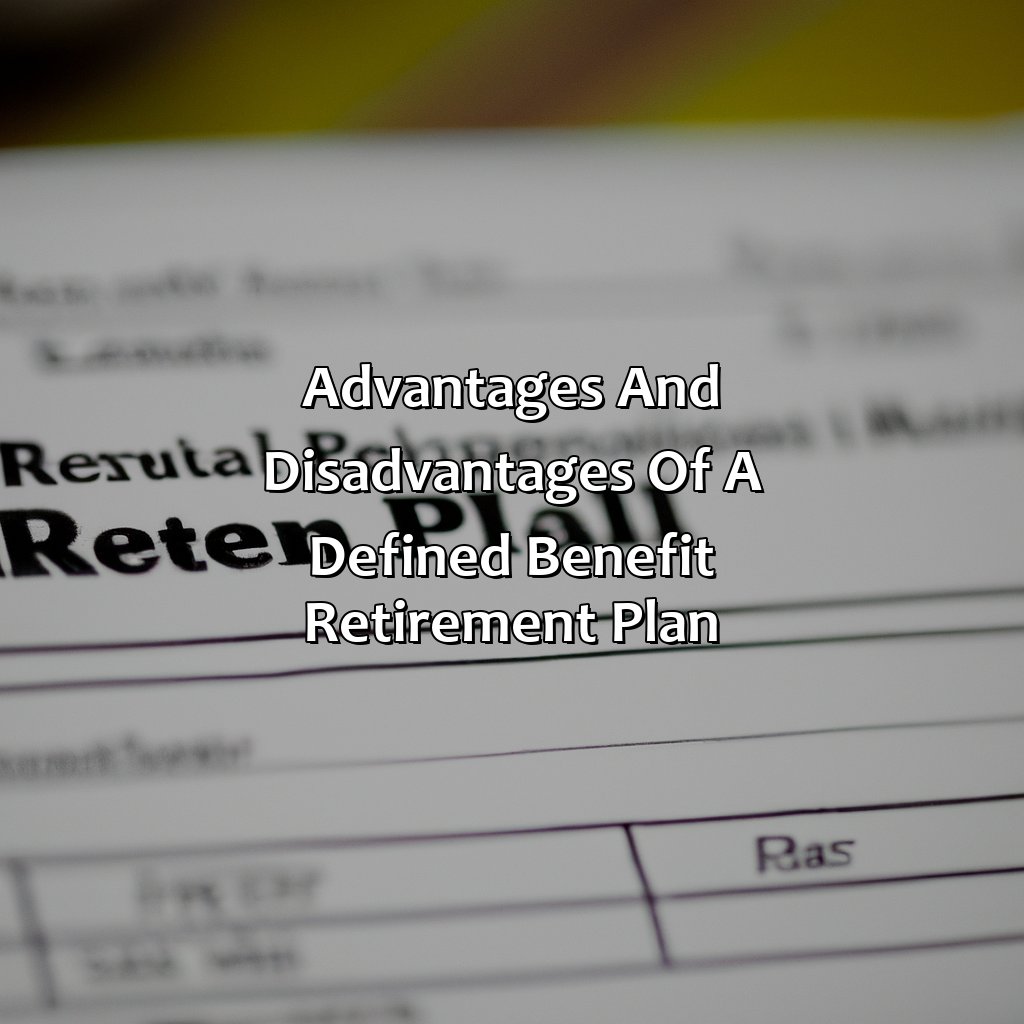
Image credits: retiregenz.com by Adam Arnold
Tax Benefits and Retirement Security
Retirement Security and Tax Benefits are significant advantages of a Defined Benefit Retirement Plan. This plan allows employees to have guaranteed retirement income and protection against the risk of market fluctuations. Contributions to the plan reduce taxable income and provide tax-deferred growth on investment earnings until withdrawal.
The employer, not the employee, is responsible for contributing enough funds to support the promised retirement benefits. It eliminates the investment risks for an employee, as the employer bears market risks on behalf of its employees. The DBP requires uniform contributions by all participants, creating an equitable base for funding retirement benefits.
Furthermore, in a defined benefit plan, participants can receive pension payments throughout their lifetimes that may even continue to beneficiaries after death. This retirement security lessens an individual’s fear of running out of funds in their final years.
In essence, not taking advantage of a Defined Benefit Retirement Plan could result in missed opportunities for a secure retirement and significant tax savings during contribution periods. It is wise to explore corporate offerings fully and efficiently manage a long-term financial portfolio while achieving personal financial goals and aspirations. A defined benefit retirement plan is like a marriage – you commit to it for life, regardless of the funding risks and lack of flexibility.
Funding Risks and Lack of Flexibility
Retirement plans have funding risks and lack flexibility, which may cause employees not to receive the promised benefits. The funding of a defined benefit retirement plan is calculated based on actuarial assumptions. If these assumptions are incorrect, contributions made to the plan may be insufficient to pay for the future benefits. This unpredictability exposes employers to financial risks that could cause them financial distress.
Additionally, defined benefit retirement plans offer less flexibility than other plans, like defined contribution plans. Because beneficiaries of a defined benefit plan are guaranteed a fixed payout regardless of investment returns or economic circumstances, switching between investment vehicles becomes impossible. Thus, employees lack control and cannot adjust their retirement savings strategies without significant consequence.
Finally, it’s worth noting that the Pension Benefit Guaranty Corporation (PBGC) will take over certain payments in case of a failed employer-sponsored pension plan; however, this protection comes with limitations in benefit payments amount and eligibility requirements.
Pro Tip: Before deciding to participate and contribute to a defined benefit retirement plan, familiarize yourself with your employer’s strategy for funding your account. Regularly review your account statements and projections provided by the administrator against any material changes in assumptions or circumstances.
Defined contribution plan? More like defined confusion plan.
Comparison with Defined Contribution Retirement Plan
Comparing Defined Benefit and Defined Contribution Retirement Plans reveals distinctive features.
Comparison with Defined Contribution Retirement Plan
| Plan Type | Contribution | Risk | Taxation | Payouts |
|---|---|---|---|---|
| Defined Benefit | Sponsored by employers | Employers bear investment risk | Taxed on distributions | Guaranteed income in retirement based on salary and years of service |
| Defined Contribution | Employee-sponsored retirement plan | Employees bear investment risk | Taxed on contributions and earnings | Value of retirement account depends on investment performance |
True and actual data of both Plans is essential for making informed investment decisions.
Defined Benefit Plans are sponsored by employers while Defined Contribution Plans are employee-sponsored retirement plans. They are funded by the employees’ contributions.
Don’t miss out on the benefits of a Defined Benefit Retirement Plan. Maximize opportunities for a financially secure retirement by exploring your options today.
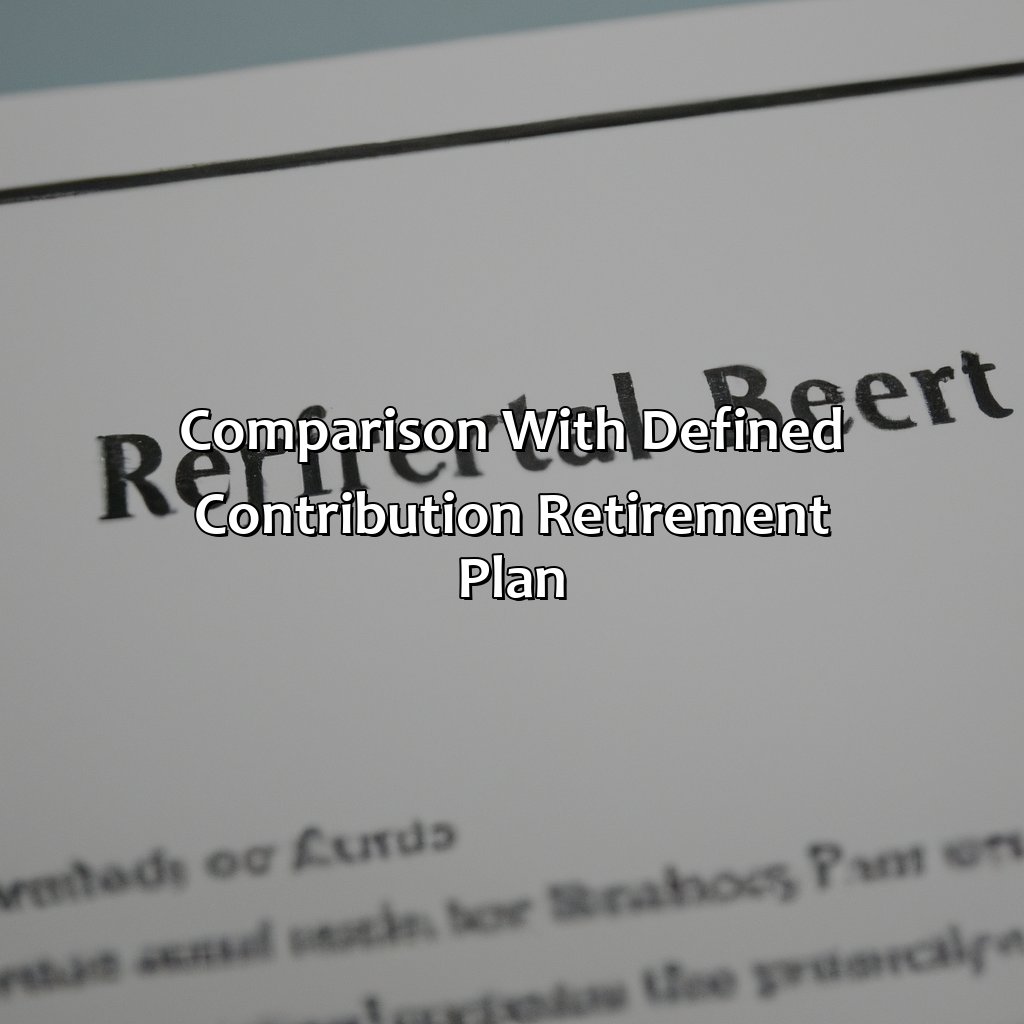
Image credits: retiregenz.com by Adam Jones
Five Facts About Defined Benefit Retirement Plans:
- ✅ A defined benefit retirement plan is a type of pension plan where an employer promises to pay a specific benefit to employees upon retirement. (Source: Investopedia)
- ✅ The amount of the benefit is typically calculated using a formula based on a combination of factors, such as the employee’s salary and length of service. (Source: US Department of Labor)
- ✅ DB plans are becoming less common as employers shift to defined contribution plans, such as 401(k) plans. (Source: The Balance)
- ✅ DB plans are insured by the Pension Benefit Guaranty Corporation (PBGC), which guarantees a portion of benefits in the event of plan termination or employer bankruptcy. (Source: PBGC)
- ✅ DB plans have come under scrutiny due to their funding status, with many plans being underfunded and in danger of not being able to meet their future obligations. (Source: Forbes)
FAQs about What Is A Defined Benefit Retirement Plan?
What is a defined benefit retirement plan?
A defined benefit retirement plan is a type of retirement plan where the employer promises to pay a specified benefit to an employee upon retirement. The amount of the benefit is typically based on a formula that considers factors such as the employee’s years of service and salary history.
How does a defined benefit retirement plan differ from a defined contribution plan?
In a defined benefit retirement plan, the employer bears the investment risk and is responsible for contributing enough funds to ensure that the promised benefit is paid out. In a defined contribution plan, such as a 401(k), the employee bears the investment risk and the benefit is based on how much money was contributed and how it was invested over time.
Who is eligible for a defined benefit retirement plan?
Eligibility for a defined benefit retirement plan varies by employer, but typically these plans are offered to full-time employees who have completed a certain number of years of service. Some plans may also be available to part-time employees.
How is the benefit amount determined in a defined benefit retirement plan?
The benefit amount in a defined benefit retirement plan is typically based on a formula that takes into account factors such as the employee’s years of service, salary history, and age at retirement. The specific formula used can vary by plan.
Can I make contributions to a defined benefit retirement plan?
No, in a defined benefit retirement plan, the employer is responsible for making all contributions to the plan. However, some plans may allow employees to make voluntary contributions, but these funds would be in addition to the promised benefit.
What happens to my defined benefit retirement plan if I leave my job before retirement?
If you leave your job before retirement, you may be entitled to a vested benefit in the plan. This means that you would still receive a portion of the promised benefit, based on the years of service you completed before leaving the job. The specific rules for vesting and benefit entitlement can vary by plan.
